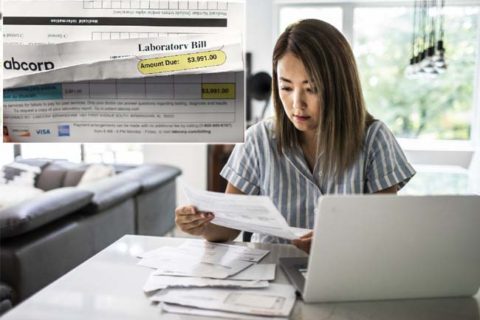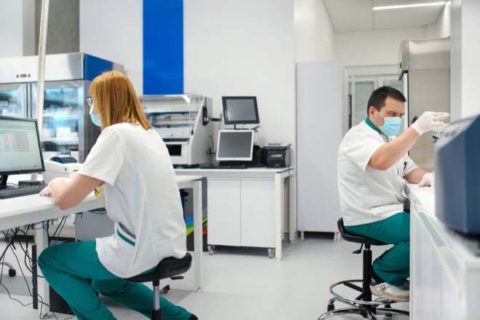LabCorp is one of the largest clinical laboratories in the US that caters to various clinical laboratory tests, including drug testing. Based on data, every year, LabCorp serves more than 240 million people. Fast and accurate test results make people do health testing at LabCorp. In addition, many job candidates also undergo drug testing at LabCorp before they apply for a job.
As we know that drug testing is one of the job requirements that job candidates must fulfill. Usually, job candidates take a 10-panel urine drug test to check for different types of drugs in the body, although a simpler 4 or 5-panel drug test with alcohol is more common. Well, this article will inform you of some information related to the LabCorp 10-panel drug test. Make sure you read the entire text below to find out information.
About LabCorp 10-Panel Drug Test
The 10 panel drug test is the most common laboratory test done to check for various illegal drugs and prescription drugs that people often abuse. This 10 panel drug test analyzes the presence of 10 drugs in a person’s system, consisting of five illegal drugs and five additional drugs including Barbiturates and Benzodiazepines.
Usually, the 10 panel drug test tests a person’s urine. It is a simple test, and widely available, as these drugs leave traces in the urine as they leave the body, making it easy to perform. Many employers require prospective employees to take a 10-panel drug test as it is considered more accurate, although a 4- or 5-panel drug test with alcohol is more common.
According to the journal Analytical Toxicology, urine tests are also more accurate for detecting drug use in a person’s body than other forms of testing, such as saliva tests. There are other substances that can be used for drug testing, such as blood and hair, which are more accurate. However, testing through blood or hair requires a very complicated process. Therefore, administrators usually prefer to use urine tests due to its accuracy and simple process.
For your information, this 10-panel drug test is commonly used in the pre-employment screening process for medical professionals, law enforcement, government employees, and other industries where drug use can impact the security and safety of others. Additionally, the 10-panel drug test can also be a condition of probation, even if not convicted of an illegal drug-related offense.
For note: The cost of a 10-panel drug test at LabCorp is $85.00.
Drugs Checked in the 10-Panel Drug Test
As explained before, a 10-panel drug test is conducted to detect 10 different types of drugs in a person’s body, including illegal drugs and prescription drugs. The following are the 10 types of drugs that can be found in a 10-panel drug test:
1. Amphetamines
Amphetamines that are detected by the 10-panel drug test include methamphetamine (meth), Amphetamine sulfate (speed), and ecstasy. In addition, the 10-panel drug test also detects ADHD medications, such as Ritalin and Adderall.
2. Cocaine
The 10-panel drug test will also test for cocaine and other drugs that contain cocaine, such as crack cocaine or freebase.
3. Cannabinoid
The 10-panel drug test will detect for marijuana and its resins such as marijuana, hashish, and extracts including THC oil, glass, and wax.
4. Opiates
Opiates come in many forms, ranging from prescription pills to illegal drugs. Some of the most common include smoked opium, morphine, codeine, heroin, oxycodone, and hydrocodone.
5. Phencyclidine
The 10-panel drug test will also test for Phencyclidine, which is also known as PCP or angel dust.
6. Barbiturates
The 10-panel drug test will test for Barbiturates that are commonly known as sedative-hypnotics. Barbiturates are very dangerous. Usually, Barbiturates are used for treating insomnia or preventing seizures. Some examples of Barbiturates are Amobarbital, Methohexital, Pentobarbital, Butalbital, Phenobarbital, Secobarbital, and Primidone.
7. Benzodiazepines
Benzodiazepines will be checked through the 10-panel drug test. For your information, Benzodiazepines can change the activity of the neurons which trigger anxiety and stress reactions. Usually, Benzodiazepines are used for treatment of anxiety disorders, insomnia, seizure disorders, panic disorders, tic disorders, and bipolar disorders. The examples of Benzodiazepines are Alprazolam (Xanax), diazepam (Valium), chlordiazepoxide (Librium), clonazepam (Klonopin), and clorazepate (Tranxene).
8. Methadone
The 10-panel drug test will also check for Methadone. For your information, Methadone sold under the brand names Methadose and Dolophine, is a drug used to treat chronic pain, and it is also used to treat addiction to heroin or other opioids.
9. Propoxyphene
Propoxyphene is a narcotic pain medication used to relieve mild to moderate pain. Propoxyphene is sold under various names such as Darvon and Darvocet. This drug can be addictive. In fact it is one of the ten most abused drugs in the United States.
10. Methaqualone
Methaqualone also known as quaaludes. It is used as a sedative and hypnotic. Today Methaqualone is no longer legally produced in the United States. However, in reality there are still people selling it. Methaqualone has the same addictive properties as barbiturates.
Detection Times of the 10-Panel Drug Test
How long drug detection lasts depends on several factors such as the type of drug used, how much drug is consumed, and how fast the body’s metabolism works. Additionally, drug detection time also refers to the amount of time required for the body to eliminate drug byproducts.
Please note that a 10 panel drug test will not tell whether a person is using drugs or not. This test only analyzes the byproducts in a person’s body that come from the breakdown of drugs. Therefore, a 10 panel drug test cannot detect how much drugs may be circulating in a person’s body.
Here is a table that provides a rough estimate of detection times for various drugs through a 10-panel drug test:
|
Drug |
Detection Duration |
| Amphetamines | 48 hours |
| Cocaine | 2-4 days |
| Cannabinoid | 2-3 days (for light smokers), 5 days (for moderate smokers), 10 days (for daily smokers), 28 days (for chronic smokers) |
| Opiates | 2-3 days |
| Phencyclidine | 8 days up to 30 days (for chronic users) |
| Barbiturates | 24 hours to 3 weeks |
| Benzodiazepines | 3 days (for short acting lorazepam),
1 month (for long acting diazepam) |
| Methadone | 3 days |
| Propoxyphene | 6 to 48 hours |
| Methaqualone | 10 to 15 days |
Procedure of the 10-Panel Drug Test
The testing environment may differ depending on who is administering the test. To conduct a 10-panel drug test, urine is needed to determine the type of drug in a person’s body. Because this test requires urine, the bathroom is a common location to perform the test. In carrying out the 10 panel drug test, first the test administrator will ask you not to urinate for several hours. Then, the test administrator will ask you to go to a certain bathroom to take your urine sample. To get truly accurate results and prevent contamination, test administrators take precautions such as turning off the water tap in the bathroom or adding dye to the toilet water. In addition, to ensure that you take the test according to the procedure, a test administrator of the same gender with you will accompany you to the bathroom when collecting urine. After you start urinating, and collect your urine into a certain container, then you can give your urine sample to the test administrator. After the urine sample is received, the test administrator will take your urine sample to a laboratory for analysis. It can take several days to get the test results. There are three possible test results; positive, negative, or inconclusive.

A bookworm and researcher especially related to law and citizenship education. I spend time every day in front of the internet and the campus library.





